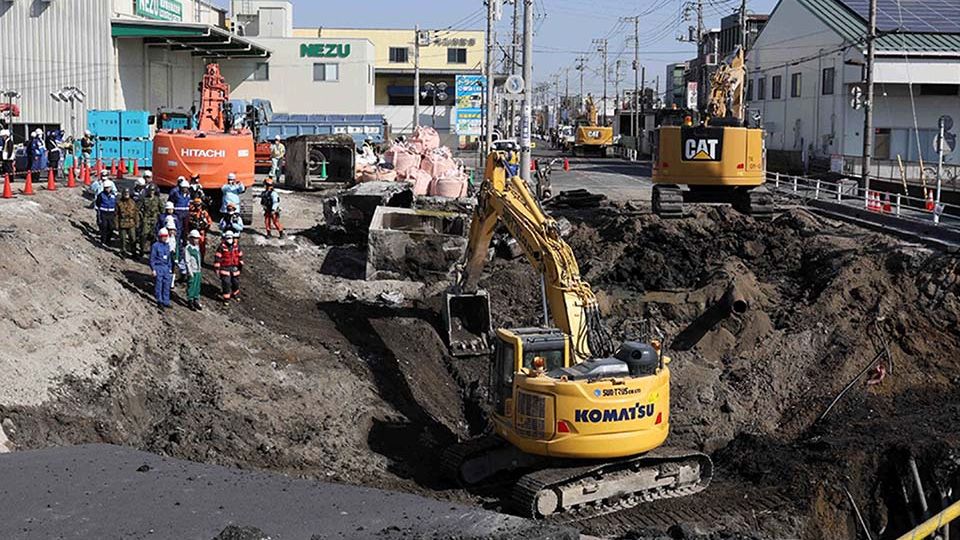October 7, 2025
TOKYO – It has come to light that many large sewer pipes across Japan are at risk of causing cave-in accidents due to aging. This situation could endanger human lives and residents’ livelihoods. Measures must be taken urgently.
The Land, Infrastructure, Transport and Tourism Ministry has released interim results from its inspection of large sewer pipes installed more than 30 years ago.
Out of the 621 kilometers of sewer pipes that have been inspected, exposed rebar and cracks were found in a total of 297 kilometers of pipes in Tokyo and 40 prefectures, requiring repairs within five years, according to the report. Of these, 72 kilometers of pipes in Tokyo and 34 prefectures require measures within a year, it said.
In January, a cave-in accident occurred on a road in Yashio, Saitama Prefecture, resulting in the death of a truck driver who fell into the hole.
The accident is believed to have occurred because a sewer pipe ruptured underground, causing soil to fall and a void to form. About 1.2 million people were asked to refrain from using the sewer system, and other significant difficulties followed.
The latest survey found that nearly half of all sewer pipes are at risk of causing cave-ins, suggesting that an accident similar to the one in Yashio could happen anywhere. This is an extremely serious situation. The central and local governments must urgently undertake repairs at hazardous locations.
Generally, countermeasures for aging infrastructure become necessary around 50 years after installation. In the case of sewer pipes, however, chemical substances contained in sewage tend to accelerate corrosion. Therefore, cave-ins due to such damage tend to occur sooner than that time frame.
There are more than 500,000 kilometers of sewer pipes, including smaller ones, in Japan. The deterioration of these pipes will accelerate in the future. The central and local governments should prioritize repairs for sewer pipes, where major consequences are expected in the event of a cave-in.
To prepare for sewer pipe failures, the installation of multiple pipes, or backup pipes, should probably be considered, particularly in densely populated areas. The use of artificial intelligence and drones, among other cutting-edge technologies, should also be pursued to inspect hazardous sections.
The challenge lies in how to secure the enormous amount of funds needed for repairs. Local governments face severe financial constraints and a shortage of staff. For them, the central government’s financial support is indispensable.
In some cases, it may be unavoidable to consider raising usage fees as an option. Each local government should explore sustainable fee systems while gaining residents’ understanding.
Much of the infrastructure built during the period of high economic growth is reaching the end of its service life. By 2040, road bridges built more than 50 years ago will account for 75% of the total, while over 50-year-old tunnels will account for 52% of that infrastructure.
Preparations for a major earthquake occurring directly under the capital and a Nankai Trough earthquake must not be neglected. The central government should not leave these measures solely to local governments, but must tackle them with a sense of urgency.

